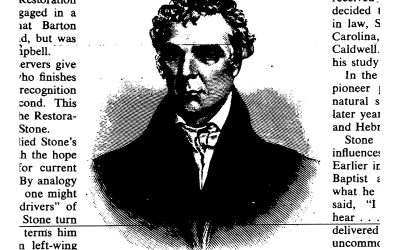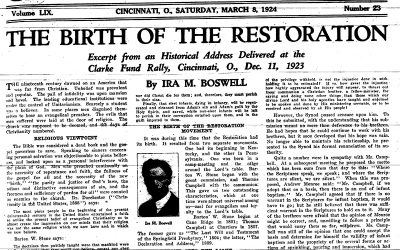Reading Time: 10 minutes
Sam Stone wrote in 1962, “If the early leaders of the Restoration movement are like men engaged in a race, it might be said that Barton Warren Stone took an early lead, but was later passed by Alexander Campbell.” Sam Stone contended that Barton Stone was deserving of greater appreciation . . . and he did so by presenting this “survey of his life.” . . .






